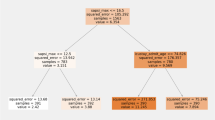Abstract
Mortality and hospital readmission are serious problems in healthcare, due to their negative impact on patients in specific and hospitals in general. Expenditure on healthcare has been increasing over the last few decades. This increase can be attributed to hospital readmissions; which is defined as a re-hospitalization of a patient after being discharged from a hospital within a short period of time. In this paper, we propose a system that is capable of using a supervised learning model to predict the status of patients when they get discharged from the hospital. For example, given a medical dataset, we would like to build a model that is capable of predicting with a high accuracy the likelihood that a newly admitted patient could be at risk of death or hospital readmission. For the purpose of prediction, we select five machine learning algorithms, namely Naïve Bayes, Decision Tree, Logistic Regression, Neural Networks, and Support Vector Machine. The results show the ability to predict the risk of mortality and hospital readmission with an accuracy of 82.78% and 63.59% respectively. The objective of the paper extends the scope of prediction to further include certain methods, such as feature engineering and boosting, to enhance the prediction accuracy.
Access this chapter
Tax calculation will be finalised at checkout
Purchases are for personal use only
Similar content being viewed by others
References
Almardini, M., Hajja, A., Raś, Z.W., Clover, L., Olaleye, D.: Predicting the primary medical procedure through clustering of patients’ diagnoses. In: Fifth International Workshop on New Frontiers in Mining Complex Patterns, nfMCP 2016. Springer, Heidelberg (2016)
Coopers, P.: The Price of Excess. Identifying Waste in Healthcare Spending (2006)
Freund, Y., Schapire, R.E.: A desicion-theoretic generalization of on-line learning and an application to boosting. In: Vitányi, P. (ed.) EuroCOLT 1995. LNCS, vol. 904, pp. 23–37. Springer, Heidelberg (1995). doi:10.1007/3-540-59119-2_166
Gorman, L.: Priceless: curing the healthcare crisis. Bus. Econ. 48(1), 81–83 (2013)
Motwani, M., Dey, D., Berman, D.S., Germano, G., Achenbach, S., Al-Mallah, M.H., Andreini, D., Budoff, M.J., Cademartiri, F., Callister, T.Q., et al.: Machine learning for prediction of all-cause mortality in patients with suspected coronary artery disease: a 5-year multicentre prospective registry analysis. Eur. Heart J. 38(7), 500–507 (2016)
Zolfaghar, K., Agarwal, J., Sistla, D., Chin, S.C., Basu Roy, S., Verbiest, N.: Risk-o-meter: an intelligent clinical risk calculator. In: ACM 19th SIGKDD International Conference on Knowledge Discovery and Data Mining, pp. 1518–1521 (2013)
Author information
Authors and Affiliations
Corresponding author
Editor information
Editors and Affiliations
Rights and permissions
Copyright information
© 2017 Springer International Publishing AG
About this paper
Cite this paper
Almardini, M., Raś, Z.W. (2017). A Supervised Model for Predicting the Risk of Mortality and Hospital Readmissions for Newly Admitted Patients. In: Kryszkiewicz, M., Appice, A., Ślęzak, D., Rybinski, H., Skowron, A., Raś, Z. (eds) Foundations of Intelligent Systems. ISMIS 2017. Lecture Notes in Computer Science(), vol 10352. Springer, Cham. https://doi.org/10.1007/978-3-319-60438-1_3
Download citation
DOI: https://doi.org/10.1007/978-3-319-60438-1_3
Published:
Publisher Name: Springer, Cham
Print ISBN: 978-3-319-60437-4
Online ISBN: 978-3-319-60438-1
eBook Packages: Computer ScienceComputer Science (R0)




